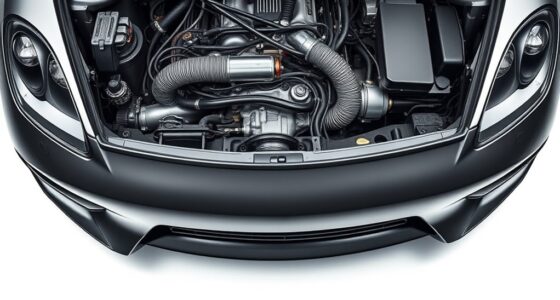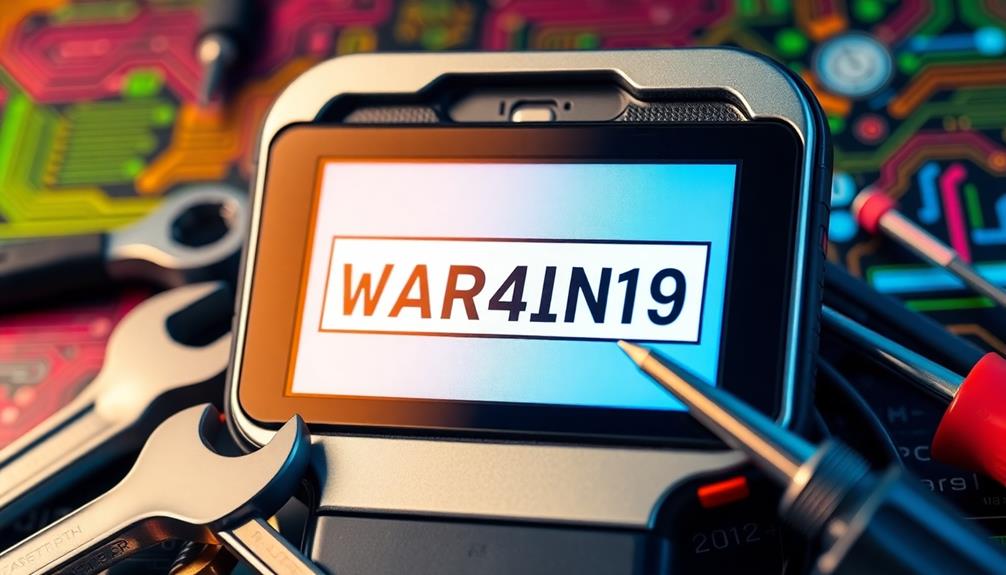Extended warranties typically cover repairs for specific components or systems beyond what the manufacturer offers, such as engines, electrical parts, or motors. The coverage varies depending on the plan you choose, including aspects like labor, replacement, or roadside assistance. However, gaps like wear and tear, cosmetic damage, or improper use are often excluded. To make the most of your protection, understanding the coverage limits and exclusions is key—if you keep exploring, you’ll find even more helpful details.
Key Takeaways
- Extended warranties typically cover repairs for specific components or systems beyond the manufacturer’s standard coverage.
- Coverage varies by provider and plan, often including parts like engines, electrical systems, or motors.
- Common exclusions include wear and tear, cosmetic damage, misuse, and damage from power surges or neglect.
- Some plans include additional benefits like roadside assistance or replacement services, while others focus solely on parts and labor.
- Reading the fine print helps clarify what is covered, excluded, and any costs or limitations involved.

An extended warranty offers you added protection beyond the manufacturer’s standard coverage, giving you peace of mind against unexpected repairs or replacements. When considering what’s covered, it’s vital to understand the scope of product coverage provided by the policy. Typically, extended warranties will cover repairs for specific components or systems that might break down over time. For example, if you buy an extended warranty for your vehicle, it may include coverage for the engine, transmission, and electrical system. For appliances, it might cover parts like the motor or control board. However, it’s important to note that product coverage can vary greatly depending on the provider and plan you select. Some warranties might cover only certain parts or types of damage, while others offer more detailed protection. It is also helpful to be aware of the legislative changes that can influence the scope of extended warranty coverage and consumer protections.
You should also pay close attention to warranty limitations. These are restrictions or exclusions that define what’s not covered under the extended warranty. Common limitations include wear and tear, cosmetic damage, or damage caused by misuse or neglect. For instance, if you have an extended warranty on your refrigerator, it might not cover damage resulting from a power surge or improper installation. Additionally, some warranties exclude coverage after a certain period or require you to use authorized service providers for repairs. These limitations are important because they can greatly influence the value and usefulness of your extended warranty. Knowing the warranty limitations helps you set realistic expectations and avoid surprises when filing a claim.
Extended warranties often come with specific terms about what’s covered and what isn’t. It’s essential to read the fine print carefully so you understand exactly what product coverage includes and where its limitations lie. Some plans might cover only parts and labor, while others could also include replacement costs or roadside assistance. Be aware that some warranties have deductibles or require you to pay out-of-pocket for certain repairs, which can affect the overall value. If you’re considering an extended warranty, compare different plans to see how they handle coverage and limitations. This way, you can select a plan that best fits your needs and provides the most detailed protection within your budget.
Ultimately, understanding what’s covered and recognizing warranty limitations will help you make an informed decision. You’ll know what to expect if your product needs repairs and whether the plan offers enough protection for your peace of mind. By carefully evaluating the scope of product coverage and any restrictions, you ensure that your investment in an extended warranty truly adds value and security to your purchase.
Frequently Asked Questions
Are Electronics the Only Products Covered by Extended Warranties?
No, electronics aren’t the only products covered by extended warranties. These warranties often include appliances, vehicles, and even outdoor equipment, all aimed at enhancing product durability. When you purchase an extended warranty, you can usually opt for a warranty renewal to keep coverage active. This way, you protect your investment, ensuring that repairs or replacements are covered beyond the original warranty period, giving you peace of mind.
Can I Customize My Coverage With Additional Optional Protections?
Yes, you can customize your coverage with additional optional protections. Many providers offer customization options to enhance coverage flexibility, allowing you to select specific protections tailored to your needs. You might add coverage for accidental damage, theft, or specific parts that aren’t included in standard warranties. This way, you guarantee your plan fits your lifestyle and provides the protection you want, giving you peace of mind.
How Does the Claim Process Work With Extended Warranties?
When you need to file a claim, you’ll follow the claim procedure outlined by your warranty provider. Typically, you contact customer service, provide proof of coverage, and describe the issue. Then, they guide you through the repair process, which may include visiting approved repair shops or getting pre-authorization. Staying organized and prompt helps guarantee a smooth claim process, so your repairs get handled efficiently.
Are There Any Exclusions or Damages Not Covered Under Warranties?
You should know that there are limitations and exceptions in your extended warranty coverage. Not all damages or issues are covered, especially those resulting from neglect, misuse, or accidental damage. Typically, warranties exclude certain parts or repairs, like cosmetic damages or routine maintenance. Always review your warranty’s fine print to understand specific exclusions, so you won’t be surprised if a claim gets denied due to these limitations.
What Is the Typical Duration of Coverage for Extended Warranties?
About 60% of extended warranties last between 2 to 4 years, making warranty duration a key factor in your decision. Typically, coverage limits are set to protect both you and the provider, often capping repair costs or replacements. When choosing an extended warranty, consider how long the coverage lasts—most fall within that 2-4 year range—and guarantee it aligns with your needs for extensive protection.
Conclusion
So, next time you’re considering an extended warranty, ask yourself: is peace of mind worth the extra cost? With coverage options that can save you from unexpected expenses, it’s a smart move if you want to avoid surprises. Remember, knowing what’s covered gives you confidence in your purchase. Isn’t it worth protecting your investment and enjoying worry-free ownership? After all, a little planning today can save you headaches tomorrow.









